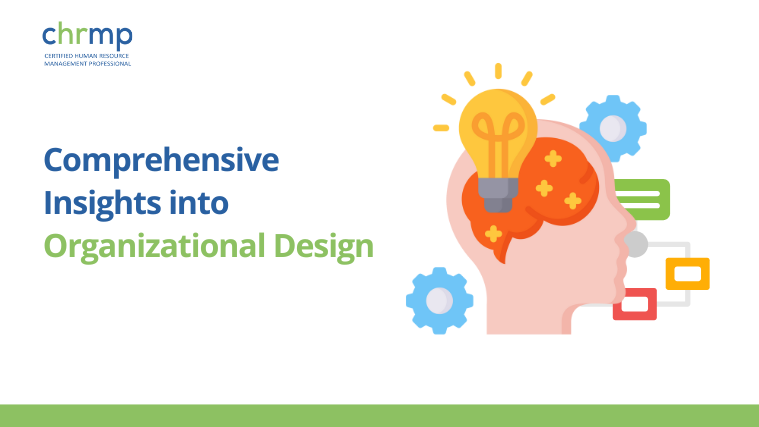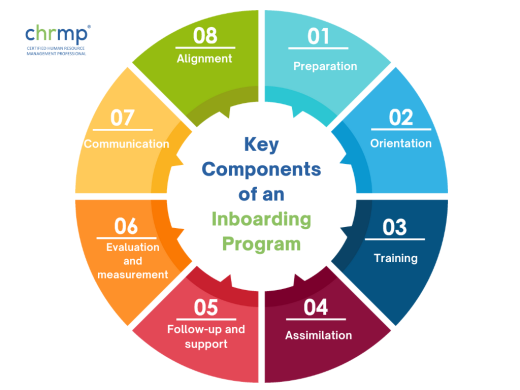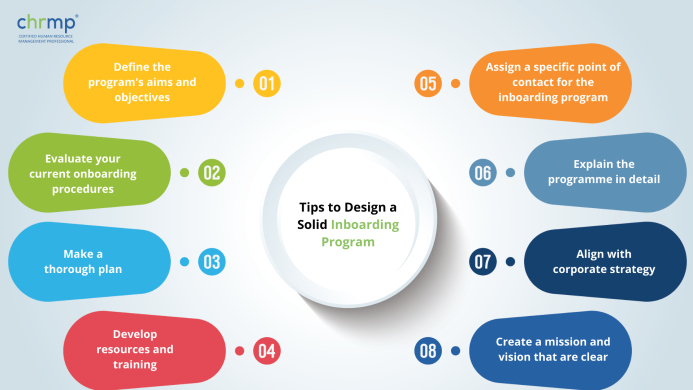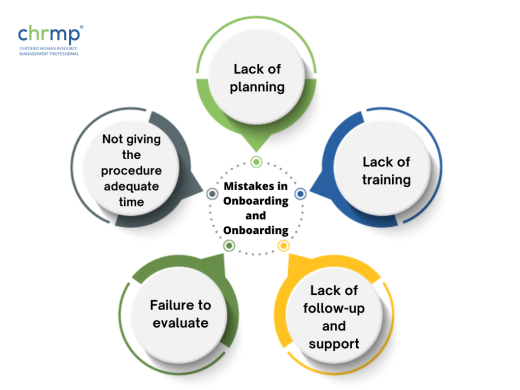

Companies worldwide have realized the value of a thorough onboarding process and for a good reason. How well you assist recruits adjusting to the job and the workplace culture determines how committed they will be to your business.
However, they need to take a crucial step: internal job adjustments.
And for this reason, many HR professionals today use the term “internal onboarding,” often known as inboarding.
In this blog, we shall adequately examine the phrase’s meaning and how to integrate it into your business.
Let’s get going!
The process of greeting and integrating employees transferring to a new function within the same business is known as “inboarding,” sometimes known as “internal onboarding.”
While this procedure is comparable to the standard onboarding for recruits, it also contains extra stages to aid workers in settling into their new position.
In addition to increased assistance from the employee’s new boss and coworkers, this may entail further training on the new department’s particular procedures, framework, and organizational culture.
Inboarding aims to make new hires feel at ease and competent in their roles so they can start contributing to the company as soon as feasible.
Inboarding is crucial for businesses since it helps maintain and grow current staff members and boost output and engagement.
This is because inboarding enables workers to improve their careers and helps prepare them for new tasks and responsibilities.
Inboarding is important for several reasons, including:
1.Retention: Inboarding assists employee retention by giving new hires the tools and resources they need to succeed in their new positions.
This may aid in lowering turnover and the expense of finding and onboarding new personnel.
2.Productivity: By ensuring that workers can start contributing to the company as soon as feasible, inboarding helps to enhance productivity.
This might enhance the competitiveness and performance of the organization.
3.Employee engagement: By giving staff members a chance to learn new skills and improve in their professions, inboarding helps to raise employee engagement.
This may enhance worker satisfaction and motivation.
4.Talent development: Organizations may use inboarding to find and nurture high-potential workers. By doing this, businesses can make sure they have a robust talent pipeline to fulfil their future demands.
5.Cost-effective: Inboarding is frequently more economical than searching for and employing new staff.
It benefits the company when present personnel are developed and kept, as doing so is frequently less expensive than finding and hiring new staff.
6.Improved Employee Experience: A well-designed inboarding program aids workers in swiftly adjusting to their new roles and environments, which improves the employee experience.
Their comprehension of the company’s culture, policies, and processes is improved, which might result in a better overall working environment.
7.Better Alignment: Innboarding aids in bringing people into line with the business’s objectives, vision, and strategy.
It guarantees that staff members know how their work affects the organization’s performance.
Inboarding is a crucial procedure that aids businesses in retaining, growing, and engaging their staff members while also ensuring that they can contribute to the company as soon as feasible.
Employers today offer more job possibilities than ever in our extremely dynamic environment.
If they are not completely content, they may always leave their employment and look for other ones, which could be troublesome for the company they are working for.
Companies frequently overlook that existing staff members need onboarding assistance, training, direction, and support just as much as new hires do.
Here are some strong arguments for investing in inboarding if you are debating whether to do so:
1. Lower turnover
Did you know that replacing a worker can cost anywhere between six and nine months’ pay?
The additional work, the remainder of the team, must put in to cover for the employee who left and the time it takes the replacement to become completely up to speed on the job are not included in that.
Instead, by investing in inboarding, you may decrease employee turnover, related expenses, and the time it takes to become used to a new position because internal recruits typically have a wealth of institutional knowledge.
Additionally, it eases HR’s search for outside personnel.
Teams are less stressed when job openings are filled faster since businesses are less dependent on a small number of capable employees. Productivity losses are lower.
2. Making transitions seamless
Internal movements require a systematic strategy to guarantee that the employee, the new team, and the prior team are all in sync and productive.
The employee will know who to turn to for assistance upon joining the new team thanks to procedures in place for transition timeframes, task handovers, training, and replacement. The team will have ample time to become used to the new employee.
Additionally, the transitional phase must provide the employee time to educate the replacement who will take over their previous function.
All parties involved may resume business as usual considerably sooner due to this.
3. Enhancing regular operations
An important benefit of an inboarding programme is cross-training to comprehend the duties of one’s coworkers.
It is common knowledge that when someone takes time off to care for sick family members or go on vacation, the rest of the team finds it difficult to fill the void and must repeatedly call them for assistance.
Team members will have far less problem stepping in for someone absent for brief periods if they receive sufficient cross-training.
This ensures that regular business operations don’t suffer and that every one may take time off whenever necessary without feeling obligated.
4. Eliminating workplace discrimination
Conflict and demotivation at work might result when staff members believe they receive fewer chances or rewards than their colleagues.
Everyone has a clear path to learning and maturing via suitable workplace transitions when an inboarding plan is in place.
Your top achievers will feel more assured that their goals will be supported this way, and the rest will perceive a leveller playing field for their success.
5. Increasing staff involvement
According to studies, 94% of workers would remain in their current positions if their employers increased their learning opportunities.
This is especially true of Gen Z and Millennial employees, who are very tech-savvy and always looking for methods to further their careers.
Employers may gain from happy, motivated workers who will give their all at work by giving them plenty of opportunities to learn, grow, and progress.
Higher production is the immediate result, which boosts the bottom line.
Onboarding and inboarding, are similar processes but with a key difference in scope and focus.
Regardless of whether they are internal transfers or external recruits, onboarding refers to the process of integrating new employees into a company.

It often consists of welcoming new employees, giving them training, and giving them the tools and support they need to succeed in their new positions.
Making new hires feel welcomed, appreciated, and ready to contribute to the company as quickly as feasible is the aim of the onboarding process.
Inboarding, on the other hand, relates exclusively to integrating and acclimating staff members who are transferring to a new position inside the same company.
The procedure is comparable to the standard onboarding for new workers, but it includes extra procedures to aid people in settling into their new position within the firm.
This includes further coaching from the employee’s new boss and coworkers and additional training on the new department’s particular procedures, structures, and culture.
Internal onboarding aims to make new hires feel at ease and competent in their roles so they can start making a contribution to the company as soon as feasible.
In essence, internal onboarding is the process of preparing current workers for a new function inside the same company. In contrast, external onboarding is the process of training new employees for their roles in an organization.
The following essential elements are often included in an inboarding program:

1.Preparation: Identification of any necessary training and development requirements and the precise requirements and expectations of the new function constitutes preparation.
2.Orientation: The process of informing staff members of their new positions as well as any pertinent business regulations and procedures.
3.Training: Educating staff members on any new technology, procedures, or systems that are relevant to their new positions.
4.Assimilation: Giving employees a chance to meet their new manager and coworkers and get to know the dynamics of their new department is a key component of assimilation.
5.Follow-up and support: Giving staff members ongoing assistance and tools, such as a designated mentor, to aid in their adjustment to their new position.
6.Evaluation and measurement: Monitoring the inboarding program’s efficacy over time and making necessary improvements. This comprises follow-up assessments, check-ins, and feedback to gauge the process’s progress and identify improvement areas.
7.Communication: It is crucial throughout the inboarding process. This includes but is not limited to outlining the employee’s objectives and goals, giving them regular updates and feedback, and ensuring that they know the resources at their disposal.
8.Alignment: Ensuring that employees understand how their work contributes to the business’s overall success is facilitated by aligning the inboarding program with the company’s goals, vision, and strategy.
In general, a successful inboarding programme should be tailored to the unique requirements of the company and the employee. It should also be created to assist staff members in swiftly developing a sense of security and confidence in their new roles.
There are various phases involved in creating a strong internal onboarding program:

1.Define the program’s aims and objectives: What you intend to accomplish with the internal onboarding program should be made very clear.
This will make it easier to make sure that the programme is adapted to the particular requirements of the business and the staff.
2.Evaluate your current onboarding procedures: Examine your present procedures to find any areas that need improvement.
To learn about their experiences and get input, conduct focus groups, interviews, or surveys with existing workers.
3.Make a thorough plan: Plan the internal onboarding program in great detail.
This should include a schedule, a list of particular tasks, and the materials that will be required.
4.Develop resources and training: Make resources and training that are specific to the requirements of the company and the workforce.
Ensure that both theoretical and practical components are included in the training and that it is participatory and exciting.
5.Assign a specific point of contact for the inboarding program: Assign a specific point of contact for the inboarding program. This individual should be in charge of organizing the program, supporting the staff, and making sure that everything runs well.
6.Explain the programme in detail: Make sure the management and staff understand the programme. Ensure they are aware of the program’s aims and objectives and the tools at their disposal.
Continuously assess and assess the efficacy of the inboarding programme, and if necessary, make necessary improvements.
This entails post-process assessments, check-ins, and feedback to gauge the process performance and identify any areas that require development.
7.Align with corporate strategy: Ensuring that workers understand how their position contributes to the success of the organization as a whole requires aligning the inboarding program with the company’s goals, vision, and strategy.
It takes time and work to develop a strong inboarding programme, but it is ultimately worthwhile.
It will support employee development and retention, boost output and engagement, and guarantee that staff members are able to contribute to the company as soon as feasible.
8.Create a mission and vision that are clear: The internal onboarding program’s aims and objectives should be made very clear. This will make it easier to make sure that the program is adapted to the particular requirements of the business and the staff.
The following six phases are involved in creating and marketing an internal onboarding program:
1.Evaluate: Identify areas that may need improvement by evaluating the present inboarding procedures. To learn about their experiences and get input, conduct focus groups, interviews, or surveys with existing workers.
2.Create a strategy: Plan out the inboarding program in great detail. This should include a schedule, a list of particular tasks, and the materials that will be required.
3.Create materials and training: Make resources and training that are specific to the requirements of the company and the workforce.
Ensure that both theoretical and practical components are included in the training and that it is participatory and interesting.
4.Promote and inform: Make sure management and staff are aware of the inboarding program.
Make sure they are aware of the program’s aims and objectives as well as the tools at their disposal. Internally, advertise the programme using business resources for internal communication, including the intranet, newsletter, email, and meetings.
5.Assessment: Continuously assess and assess the efficacy of the inboarding program, and if necessary, make necessary improvements.
This entails post-process assessments, check-ins, and feedback to gauge the process performance and identify any areas that require development.
6.Align with corporate strategy: Ensuring that workers understand how their position contributes to the success of the organization as a whole requires aligning the internal onboarding programme with the company’s goals, vision, and strategy.
Employers may create and promote an inboarding programme that aids in employee development and retention, boosts productivity and engagement, and ensures that new hires can contribute to the company as soon as possible by following these six steps.
Inboarding and onboarding are crucial procedures that assist businesses in keeping and developing their staff members and ensuring they can contribute to the business as soon as feasible.
However, there are a few frequent errors that businesses make while putting these programmes in place:

1.Lack of planning: Not making a strategy for the internal onboarding or onboarding process might result in uncertainty and a lack of focus.
Not providing adequate details Misunderstandings and a lack of involvement may result from not giving recruits adequate information about the company’s culture, policies, and processes.
2.Lack of training: Giving new hires the proper instruction and tools might result in a lack of engagement and productivity.
3.Lack of follow-up and support: Employees may feel alone and unsupported in their new position if they don’t receive adequate follow-up and assistance.
Inboarding or onboarding processes without employee participation might result in a lack of engagement and ownership on the part of the staff.
Employees may not comprehend how their roles contribute to the success of the business as a whole if inboarding or an onboarding programme is not in line with the company’s goals, vision, and strategy.
4.Failure to evaluate: A lack of progress and improvements might result from a failure to assess the efficiency of the inboarding or onboarding program.
5.Not giving the procedure adequate time: Employees that are rushed through the inboarding or onboarding process may need to be entirely prepared for their roles and may not be aware of the company’s culture and expectations.
Organizations should make sure they have a well-defined inboarding or onboarding programme in place and that they provide new recruits with the knowledge, instruction, and support they need to succeed in their new job in order to avoid making these frequent mistakes.
Employee participation, programme alignment with business objectives, programme measurement and evaluation, and adequate time allocation are other important considerations.
The internal onboarding programme used by Google is a prime illustration of excellent practices.
Google’s inboarding programme, dubbed “Googlegeist,” is designed to make it as simple as possible for new workers to transition into their positions and the Google culture.
The programme has a number of crucial elements, including:
Orientation: New employees are given information about Google’s culture, principles, and policies during an orientation session.
Buddy programme: During the onboarding process, new recruits are partnered with an experienced employee who serves as their mentor and coach.
Training: New employees participate in many training sessions that go through the technical and managerial facets of their position.
Assimilation: New employees are given a chance to meet with their management and coworkers and become familiar with the dynamics and culture of their new department.
Follow-up and support: To assist new recruits in settling into their new roles, services such as a designated mentor are made available on an ongoing basis.
Evaluation and Measurement: Google continually assesses the internal onboarding program’s success through employee surveys and feedback, making necessary improvements.
Communication: Throughout the internal onboarding process, Google maintains clear and consistent communication, making sure that the employee is aware of the resources at their disposal.
Alignment: Google’s internal onboarding programme is in line with the organization’s objectives, vision, and strategy, which makes it easier to make sure that staff members are aware of how their work affects the organization’s performance as a whole.
The goal of Google’s inboarding programme is to enable new hires rapidly feel at ease and confident in their new work. It is specifically suited to the needs of the company and the employees.
To make sure the programme is effective, it is also reviewed and modified frequently.
The buddy programme is especially important because it gives new employees a personal link to the business culture and somebody they can turn to for advice and assistance.
This facilitates the transition for new recruits by making them feel more at ease and supported.
Furthermore, Google’s innovation and experimentation culture is included throughout the internal onboarding processes, giving new workers an early understanding of the company’s beliefs and objectives.
In conclusion, Google’s internal onboarding programme is a well-rounded, thorough, and efficient programme that aids in employee development, productivity, and engagement while also ensuring that new hires are able to contribute to the company as soon as feasible.
1. What are the goals of an inbording process?
A typical internal onboarding procedure has the following objectives:
Retention: Assisting workers in feeling secure and at ease in their new roles, lowering turnover and the expense of finding and onboarding new workers.
Productivity: Ensuring that personnel may start making a contribution to the company as soon as feasible, enhancing the competitiveness and performance of the company.
Giving employees the chance to improve in their careers and learn new skills will increase employee engagement and motivation.
Identification and development of high-potential personnel are key to ensuring that a company has a strong talent pipeline to fulfil upcoming business demands.
Alignment: Getting workers to grasp how their individual contributions to the organization’s performance as a whole relate to the company’s goals, vision, and strategy.
Improved employee experience: Assisting staff members in swiftly adjusting to their new roles and environments and increasing their knowledge of the company’s culture, regulations, and procedures
The overall goal of the internal onboarding process is to guarantee that workers can contribute to the company as soon as possible by assisting them in feeling at ease and confident in their new roles. Additionally, the procedure aids in the organization’s efforts to keep, grow, and engage its workforce while ensuring that they are prepared to fulfil future business demands.
2. How long does the inbording process typically take?
The intricacy of the new function, the company, and the resources available to help the individual all affect how long an internal onboarding process takes. While some businesses may have internal onboarding procedures that just take a few days, others may have procedures that take weeks or even months to complete.
Internal onboarding procedures often take a few days to a few weeks. The intricacy of the new function, the number of systems and procedures the person must learn, and the resources available to assist the individual all affect how long the process takes. To get the person up to speed fast, some firms could choose a quicker onboarding procedure, while others would want to take a more thorough approach.
While some firms could like to take a more progressive approach and spread the onboarding process out over several weeks, others might prefer to have a quicker onboarding process to bring the employee up to speed fast.
It’s critical to remember that the objective is to have the employee comfortable and confident in their new job as fast as possible, not to rush the process. An internal onboarding programme that is well-structured and customized to the unique requirements of the employee and the business is likely to be more successful than a one-size-fits-all strategy.
3. What are some common challenges during the inboarding process?
Several difficulties may arise throughout the internal onboarding process. Among the most typical difficulties are:
Time restrictions: The procedure can take a long time and may be challenging to accommodate into an already full schedule.
Limited resources: Businesses might need more money to give new workers the assistance and training they need to succeed in their new positions.
Communication: It may be challenging to be clear and consistent throughout the internal onboarding process, which can cause confusion and misconceptions.
Employee resistance to change is a possibility, especially if new systems and procedures are being demanded of them.
Having trouble adjusting to a new position: Some workers may struggle to adjust to their new positions, which can cause irritation and a lack of productivity.
Lack of follow-up and assistance: If employees do not get enough help once the internal onboarding process is over, they may feel alienated and unsupported.
Alignment: Workers might not be aware of how their work affects the organization’s overall performance.
Limited measurement and evaluation: It’s possible that organizations don’t have a method in place to gauge how well their internal onboarding procedure is working.
Organizations should implement a clear internal onboarding programme, offer workers the required assistance and training, and properly explain the process to the staff in order to overcome these difficulties. Organizations should also integrate the programme with the business plan and include the workforce in the process. It’s crucial to measure and evaluate the internal onboarding procedure to find areas for improvement and implement the required corrections.
4. How can I make sure that new hires feel welcomed and included?
There are a number of strategies to guarantee that new recruits experience inclusion and warmth during the internal onboarding procedure:
Warmly welcome new recruits: Make sure that new hires get a favourable first impression from the time they arrive by giving them a warm welcome.
Assign a mentor: Assemble a mentor or buddy for new recruits who may offer advice and assistance during the onboarding procedure.
Encourage team-building exercises: Plan exercises that let new recruits get to know their coworkers and form bonds with them.
Communicate effectively: Throughout the onboarding process, communicate effectively and consistently with new recruits to ensure that they grasp the requirements and objectives of their new position.
Engage new recruits in decision-making: Encourage new hires to contribute their thoughts and ideas by including them in the process.
Make sure new recruits feel at ease and secure in their new roles by offering frequent check-ins, comments, and assistance.
Celebrate accomplishments and milestones to make new employees feel valued and appreciated.
Provide new recruits with possibilities for growth and development. By providing these opportunities, you may help them see a clear route for promotion within the company.
Engage new recruits in the culture of the firm: Engaging new hires in the culture of the company will help them better understand and identify with the company.
Organizations may assist new recruits in adapting to their new roles and the business culture more quickly and increase their engagement and productivity by making them feel included and welcome.
The inboarding process in an organisation where employees are integrated into the same organisation, but into new posts or functions.
How well this integration process goes, determines how dedicated and valuable the recruits are going to be for the organisation. Employees settling into new roles need a little extra aid and involvement from the company in terms of training, procedural formats and the work culture of the organisation, so that they start contributing to the company as quickly as possible after joining to boost output and engagement of the employees.
Inboarding process is critical function as it promotes employee retention, productivity, engagement, talent development for high potential workers, better alignment of employees with the goals and objectives of the organisation and cutting down new recruitment costs.
This also helps in building brand loyalty and career development of the employees. Recruiting and onboarding a new recruit might cost 8-9 months pay, in addition to the effort and contribution of the existing staff to cover up for the exiting employee.
Hence it becomes an important objective of the organisation to have an effectively designed inboarding process in place.
© 2007-2025 CHRMP| All Rights Reserved | Powered by Ripples Learning & Research Private Limited
